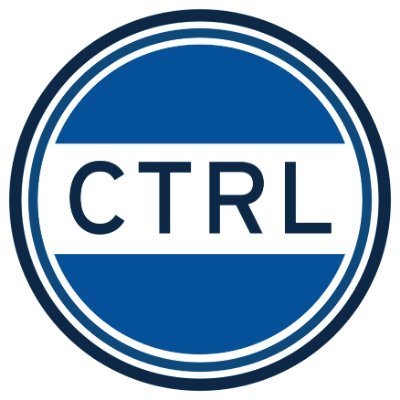Seeing Journalism Pedagogy Through the Eyes of a Visually Impaired Instructor
By Ibrahim Emara, Ph.D.
Fall 2022
I was fully aware of the constant shifts and uncertainties within the demanding profession of journalism before making such a ‘chess’ decision, that is, practicing and teaching journalism regardless of being a visually impaired person.
I have a common eye condition that limits my visual ability known as Retinitis Pigmentosa. This means that I have a residual sight but is not functional to be utilized in teaching or performing other daily life activities. As a substitute for vision, I relied heavily on Braille and audio devices to study, read, and write. Not enough, I thus had to look for alternative methods that allow me to work independently.
Initially, I never thought that poor eyesight would hinder me from enrolling in the journalism department (Palan, 2021). But my fears stemmed from the symptoms of ‘disability-phobia,’ which afflicted the Egyptian university education system. This system failed to absorb students with disabilities, widening knowledge and education disparities settled in Egypt for many years (Badr & Elmaghraby, 2021). Quite often, many people build their attitudes toward persons with visual impairments based on prejudices or preconceived ideas. As a result of the absence of a guidebook that regulates the relations between sighted and non-sighted people, both groups are more likely to hurt each other when they interact.
This state of skepticism soon dissipated and turned into tremendous opportunities, showing my sighted friends and community that I can be a teacher of an overwhelmingly visual subject. From my first day onward, I was dedicated to carrying out my teaching assistantship duties, even with the same workloads and deadlines of my sighted colleagues, most of which require sharp visual acuity. As for teaching journalism courses, I have developed syllabi, selected reading materials, and created PowerPoint presentations. Because of poor sight acuity, however, I had to spend a lot of time sifting through inaccessible websites looking for materials that support the course content.
Originally, I delivered my lectures mostly verbally because the school only had chalkboards at the time—electronic boards or projectors were almost unheard-of technologies. To maintain students’ attention, I designed my class full of ‘memory recovery’ activities, including cases, discussions, debates, and role-plays, just to name a few. Likewise, instead of students raising their hands to participate in class discussions, they were instructed to replace such visual cues with vocal buzzes, a message to me that further explanation is needed since I cannot read their facial gestures.
Today, thanks to cutting-edge technologies, I can connect my laptop to a monitor or smart board to show my students PowerPoint slides, videos, images, audio files, and internet websites. Still, the content shown on the projector is beyond my reach, but I can at least control the projector using screen reader1 software.
With most media and journalism classes being visual, the screen reader assists me to display visual materials to the class for students, while hotkeys and shortcuts allow me to interact with ‘unseeable’ content. Sometimes the screen reader gives me navigation instructions, and I try to make sure that audio instructions come to me through a Bluetooth headset, so that the sound might not be a source of distraction to students.
In addition to screen reader software, I used another assistive technology device called Braille Display.2 I save lecture keywords to the Braille Display’s SD card so that I can access them in class. Usually, I go over the main points of the lesson in an improvisational setting, then turn to the Braille Display to read hard-to-remember information. This includes statistics, quotations, or any other form of complex data.
As far as assessing students’ assignments, an efficient method I have used as a teaching assistant is to have students read their papers aloud. The advantages of this approach are (1) the student can communicate his writings more clearly; (2) other students can comment on his writings; and (3) students can learn from other’s mistakes. This technique saves me much time since using a screen reader to read electronic files may take more time than reading with the eyes. However, if the assignment is too long or warrants deep feedback, I seek the help of a sighted person to read students’ assignments. Even with the progress made in the field of natural language processing, I cannot read hand-written assignments because the optical character recognition software do not support the Arabic language. But now, I can ask my students to write the assignment in a Microsoft word document and send it via an e-mail message.
Undoubtedly, new technologies have played an important role for people with visual impairments and allowed them to find more job opportunities even in occupations they have never thought of before. However, people with visual impairments encounter many challenges and problems when using these technologies. For example, the use of technology can sometimes be inaccessible for students, especially those who do not own computers. Additionally, many academic publishers, databases, and website content are established as a ‘cosmetic’ link on their websites’ frontpage for inclusivity and have not truly improved for accessibility purposes.
We all have a role to play to bring about real changes to the lives of people with visual impairments, whether you are in academia, government, or private bodies. I do believe that changing the negative stereotypes toward people with visual impairments starts with visually impaired people themselves. And thus, they should take effective measures rather than just holding empty slogans. We need to present people with visual impairments as role models who can work in any profession, as well as suggesting policies and solutions by which difficulties facing this group can be mitigated. Many universities still deny the job applications of instructors with visual impairments, especially if the teaching position in a subject requires vision. Government and academic institutions should give much consideration to the abilities and skills of people with visual impairments and pave the way for them to teach journalism and other visual-related subjects. To that end, students, parents, instructors, and human resources specialists should hold positive attitudes toward people with visual impairments. Seeing them as assets to the academic community, university administrators should provide them with the tools and assistive technologies that enable them to perform their work
Author Profile
Ibrahim Emara, Ph.D. is a Fulbright post-doctoral fellow at American University’s School of Communication and an Associate Professor of Journalism at Faculty of Arts, Tanta University in Egypt. He is the first visually impaired person in Egypt to teach and conduct research in journalism. His research focus on the use of mass media among people with visual impairment. Currently, Dr. Emara is interested in investigating the use of new media by visually impaired activists using computational methods.
References
Badr, H., & Elmaghraby, S. (2021). How higher education faculty in Egypt perceive the effects of Covid-19 on teaching journalism and mass communication: Perspectives from the Global South. Journalism & Mass Communication Educator, 76(4), 394-411.
Jones, C. T., Saujani, S., & Zbitnew, A. (2021). Journalism and Disability in Canada: Blind and Visually Impaired Journalists Weigh In. Canadian Journal of Communication, 46(1).
Palan, R. (2021). “I seriously wanted to opt for science, but they said no”: visual impairment and higher education in India. Disability & Society, 36(2), 202-225.
Temple, C., Saujani, S., & Zbitnew, A. (2021). Journalism and Disability in Canada: Blind and Visually Impaired Journalists Weigh In. Canadian Journal of Communication, 46(1), 99-113.



